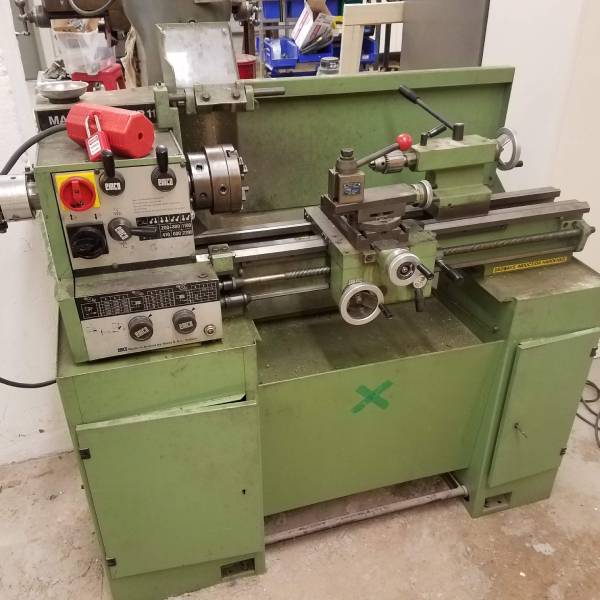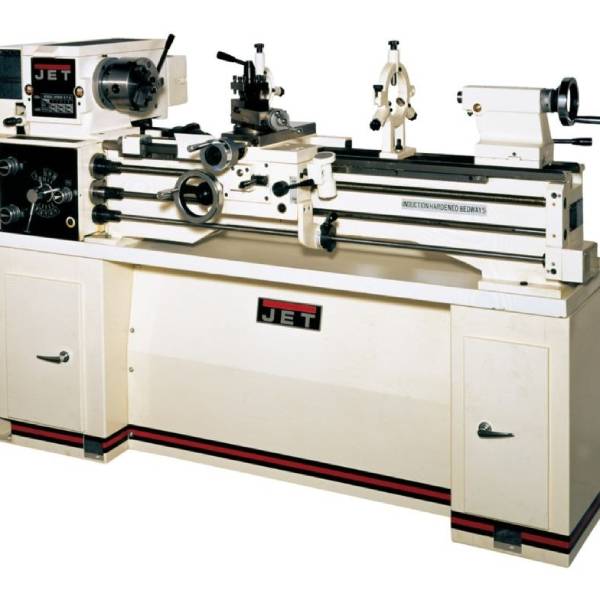Mill vs Lathe: Choosing the Right Machine for Your Project
Introduction to Mill and Lathe Machines
In the realm of fabrication and manufacturing, mill and lathe machines stand out as fundamental tools. These machines shape and alter solid materials, such as metal and wood, to create various parts and components. Both mills and lathes have unique functions and are critical for different operations within workshops and industry.
![]()
The Basics of a Lathe Machine
A lathe machine holds and rotates a workpiece. It uses a single-point cutting tool that stays still to cut and shape the material. Lathes suit cylindrical objects and can produce symmetrical products with great precision.
The Basics of a Milling Machine
Milling machines operate differently. They hold the workpiece in place while cutting with a multi-point tool. This allows for crafting more complex shapes and features beyond cylindrical forms. Milling machines can perform detailed work including making slots and threading.
Comparison of Lathe and Mill Machine Operations
When comparing mill vs lathe operations, remember: lathes rotate the workpiece against a fixed cutting tool, while milling machines spin the cutting tool against a stationary workpiece. This distinction is key in selecting the right machine for your project, especially considering the shape and complexity of the products you aim to create.
Core Differences Between Lathe and Milling Machines
Lathes and mills are both key to creating parts, but they work differently.
The Basics of a Lathe Machine
A lathe machine rotates the workpiece for cutting. It’s ideal for symmetrical shapes, especially cylindrical ones. The cutting tool doesn’t move; it stays in one place.
The Basics of a Milling Machine
A milling machine secures the workpiece and uses a rotating tool for cutting. It can make complex shapes, like slots and threads. The tool moves across the material to shape it.
Comparison of Lathe and Mill Machine Operations
Lathe machines spin the workpiece against a still tool for cutting. Milling machines move the tool for cutting across a still workpiece. Choose a lathe for cylindrical parts and a mill for complex forms.
Lathe Machines: Types and Uses
When it comes to shaping materials, lathe machines are a popular choice. They are versatile and come in different types to meet various needs. Here, we’ll explore engine lathes, turret lathes, and the precision and applications of CNC lathes.
Understanding Engine Lathes
Engine lathes are a staple in most machine shops. They handle a wide range of tasks, from cutting to drilling. Ideal for creating symmetrical objects, they are a key tool for many manufacturers.
Turret Lathe Functionality
Turret lathes are known for their quick tool changes. This makes them perfect for production lines that require speed and efficiency. Their ability to perform multiple operations without manually changing the tool is a big advantage.
CNC Lathe Precision and Applications
![]()
CNC lathes take precision to the next level. Operated by computers, they can achieve extremely precise cuts. Industries that need high accuracy, like aerospace or medical, rely on CNC lathes for their intricate parts.
Milling Machines: Varieties and Applications
Milling machines come in several types, each suited for specific tasks. From shaping metal to cutting intricate patterns, the choice of milling machine impacts the final product. We’ll look at horizontal and vertical milling machines, plus the role of CNC technology.
Horizontal Milling Machines and Their Advantages
Horizontal milling machines feature a spindle oriented horizontally. They work well for heavy cutting like gears and slots. Their design helps in chip removal and can manage large, heavy materials. Being adaptable, they fit nicely into industrial settings.
Vertical Milling Machines for Detailed Work
Vertical milling machines have a vertically oriented spindle. They excel at precise tasks like end milling and drilling. They are ideal for intricate work such as creating keyways and pockets. The vertical setup allows for better handling of smaller, detailed components.
The Emergence of CNC Milling Machines in Manufacturing
CNC milling machines bring automation to milling. They can work across multiple axes with high precision, creating complex parts consistently. Essential in many industries, they handle both high-volume production and prototype development effectively.
Key Considerations for Selecting Mill vs Lathe
When choosing between a mill and a lathe, several factors come into play. Understanding these can guide your decision towards the most effective equipment for your project.
Product Shape and Complexity
The shape and complexity of your product are crucial in picking the right machine. Use a lathe for simple, cylindrical parts like rods and shafts. Opt for a milling machine for complex shapes, like parts with slots and geometrical designs.
![]()
Volume of Production and Efficiency
Consider the number of parts you need and how fast you need them. Lathes can be quicker to set up for simpler products, making them good for low volumes. Milling machines excel in repeated precision work. They are ideal for high-volume, complex productions.
Precision and Material Waste
Both machines offer high precision, but the nature of your project matters. CNC lathes are best for precise cylindrical parts. Milling machines may produce more waste due to their cutting nature. Think about the material costs and the need for fine details when making your choice.
Enhancing Projects with Post-CNC Treatments
After machining parts with CNC machines, post-CNC treatments are vital for improving the quality and lifespan of manufactured parts. These treatments may include polishing, blasting, and anodizing, which enhance both the aesthetics and functional properties of CNC components. Using a jet metal lathe for precision machining can significantly benefit from post-CNC treatments, enhancing the parts’ durability and appearance while maximizing their performance.
Polishing to Enhance Aesthetics
Polishing removes superficial defects and brings a high-gloss finish to parts. This process can make CNC parts look sleek and new, which is critical in areas like consumer electronics, where visual appeal is paramount.
Blasting for Surface Preparation
Blasting involves using high-pressure media to clean the surface of CNC parts. It prepares the surfaces for further treatment, such as painting or coating, by ensuring that they are perfectly clean and free from any residues.
Anodizing for Corrosion Resistance
Anodizing improves corrosion resistance, surface hardness, and wear resistance of the parts. This electrochemical process thickens the natural oxide layer on the surface of metal parts, like aluminum, which is often necessary for aerospace and automotive applications.
Each post-CNC treatment serves to push your CNC projects beyond simple machining, ensuring they meet high standards of quality and durability. By investing in these processes, you protect and enhance your products, adding value that extends beyond the manufacturing floor. If you’re exploring CNC projects, understanding what a lathe can do is essential. It complements post-CNC treatment by achieving precision and enhancing the quality of your final products.
Conclusion: Making the Informed Decision Between Mill and Lathe
To wrap up, choosing between a mill and a lathe boils down to specifics. Consider the shape, complexity, and volume of your project. A mill performs complex cuts, making it fit for intricate designs. A lathe excels at symmetrical, cylindrical shapes, perfect for simpler tasks. Efficiency and production volume also play big roles. For small batches, a lathe can be quicker to set up. For larger runs demanding precision, milling machines stand out.
Remember to weigh in precision needs and potential material waste. CNC lathes offer high accuracy for round parts. Milling machines, however, can lead to more waste because of their cutting technique. Factor in material costs and detail needs carefully.
Moreover, post-processing like polishing, blasting, and anodizing can elevate your project. These treatments enhance appearance and durability, crucial for long-lasting quality. Choose a mill for its versatility and a lathe for its speedy precision. Consider all these angles for a decision that best matches your project requirements. A lathe machine offers exceptional speed and precision for intricate designs. When combined with post-processing treatments, it significantly enhances both the aesthetics and durability of your project.
Ultimately, whether you pick a mill or a lathe, you must align the machine to your core needs. Assessing your production goals and the specifics mentioned will lead you to the right choice. With the right machinery, your projects will not only be efficient but also finished to the highest standards of quality.




